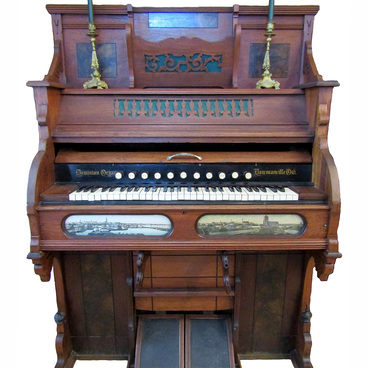This mirror was made in the art nouveau style, which originated in the end of 1880s and became the leading one in architecture, arts and crafts and design in the late 19th−early 20th centuries. Art nouveau ignored straight lines to replace them with round, more natural shapes. Craftsmen tried to give a new dimension to the daily used stuff, making the new blend in with the surroundings.
A Mirror, art nouveau
Время создания
The early 20th century
Размер
250x81x37,5 cm
250х81х37.5 cm
250х81х37.5 cm
Техника
Wood (pine wood, hazel-wood, aldern, linden), plate glass, woodwork, carving
Выставка
0
Открыть в приложении#1
A Mirror, art nouveau
#3
#8
The late 19th century saw the production of a lot of new furniture and interior items, including mirrors, made in the art nouveau style. This mirror is made of several tree species. The frame and the mirror stand, which looks like a console, are made of solid pine wood. The pine wood panels are covered with hazel nut veneer. Its chiselled elements and the reverse side of the mirror may have been made of linden. The carved elements were made of aldern. The various tree species and their shades add to its festivity and richness.
#9
The mirror surface is made of facets — ground pieces of transparent glass. This was a cheap and prevalent material, often used to make stained-glass windows.
#10
The museum acquired this exhibit from a woman writer, Irina Aristova. It became part of its permanent exhibition in the 1990s. She was a descendant to three well-known families at once: the Aksakovs, the Scheglovs and the Aristovs. Her grandfather, Sergey Karpovich Scheglov, moved house to Samara upon receiving a position in the District Court. His wife, Anna Vasilievna Scheglova, played at important role in Samara’s music life. She would arrange solo recitals and musical evenings, accompanied local and touring singers on the piano, taught music to children from merchant and noble families. From their previous place of residence she had brought to this place her favourite books, a German baby grand with sheet music and also porcelain items.
#11
Irina Aristova had been raised in a large family and from childhood was surrounded by love. But during the Revolution and the Civil War she had to go through lots of hardships. In the autumn of 1919 her younger sister died of typhoid, in 1920 her mother passed away, and in between she lost her father. Being a member of the District Court, he had to escape the Reds. Vladimir Aristov retired, changed into civilian clothes but failed to escape together with his family. Now it’s hard to say to which of the families the mirror initially belonged — the Aksakovs, the Scheglovs and the Aristovs. It was not dated.
#4
Part of the family archive of the Aristov-Scheglovs is in the funds of the Samara Literary Museum.
читать дальшескрыть
00:00
00:00
1x
A Mirror, art nouveau
Время создания
The early 20th century
Размер
250x81x37,5 cm
250х81х37.5 cm
250х81х37.5 cm
Техника
Wood (pine wood, hazel-wood, aldern, linden), plate glass, woodwork, carving
Выставка
0
Открыть в приложении
Поделиться



